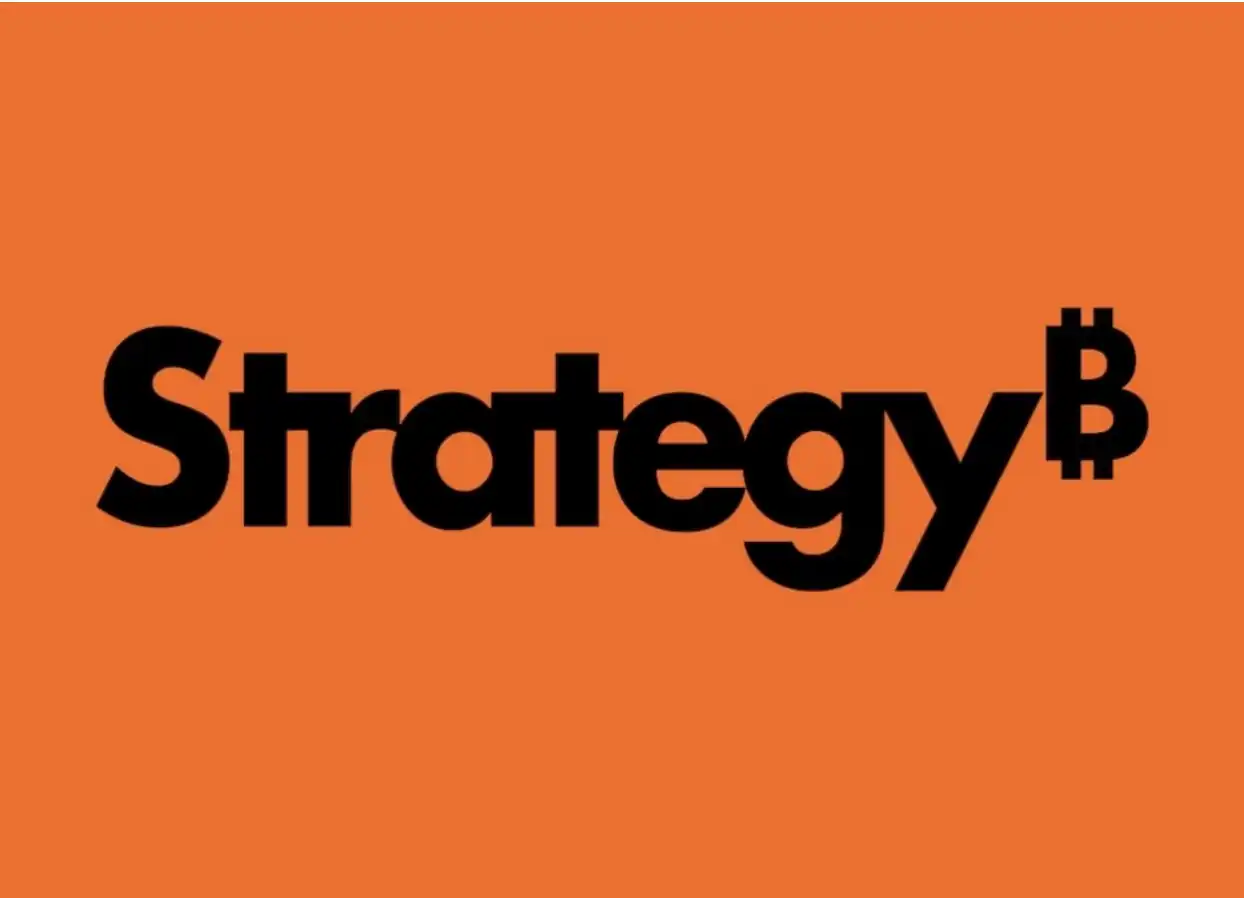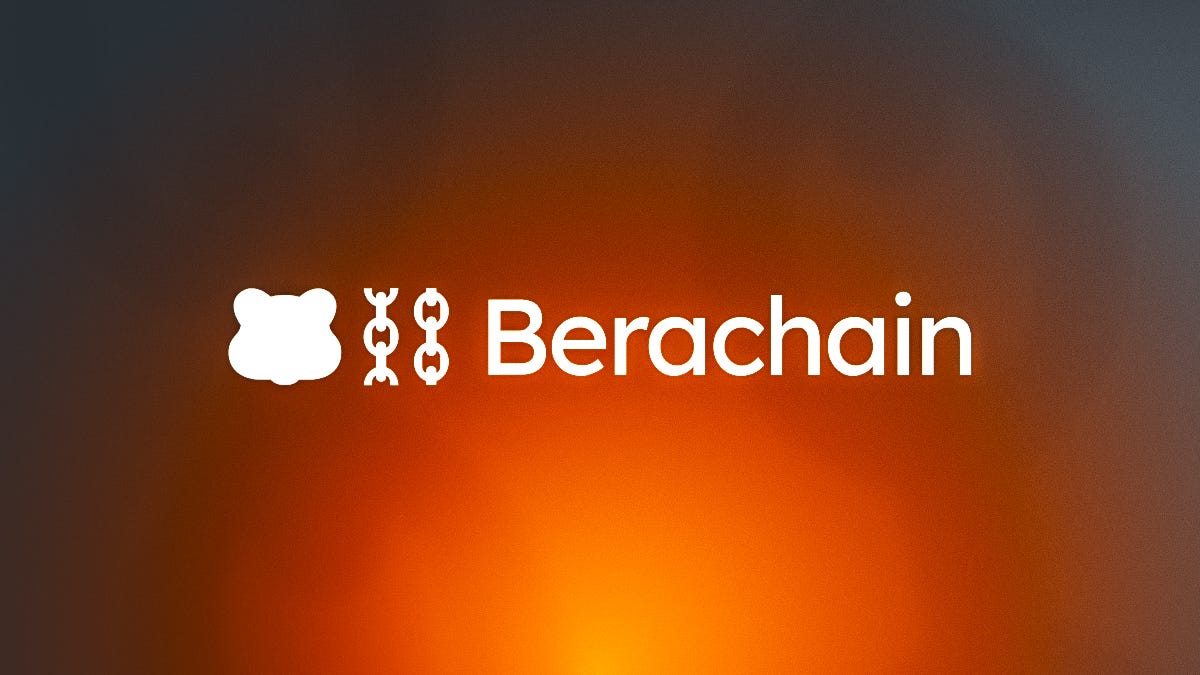Michael J. Saylor's Strategic Bet: Bitcoin's Premium Issuance and Capital Control
Thanks to the unique high-premium financing mechanism in the US stock market, MicroStrategy has not only taken the lead in Bitcoin-related stocks but has also developed a set of practices combining equity issuance and price manipulation, forming an "alchemy" that is recognized by the US stock market.
Original Article Title: "Michael J. Saylor's Strategic Bet: Bitcoin Premium, Issuance, and Capital Control"
Original Article Author: Ac-Core, YBB Capital Researcher
1. Introduction:
MicroStrategy was initially an enterprise software company focused on business intelligence solutions, but since 2020, its focus has shifted significantly to Bitcoin investment. The company raised funds to purchase Bitcoin by issuing stock and convertible bonds, making it a focal point in the US stock market.
On February 6, 2025, the publicly traded company MicroStrategy, which holds the most Bitcoin globally, announced that it was officially renaming itself to Strategy (for ease of reading, it will still be referred to as MicroStrategy below). At that time, data showed that Strategy's balance sheet held 471,107 Bitcoins, accounting for about 2% of the global Bitcoin supply. By February 21, 2025, MicroStrategy had accumulated nearly 500,000 Bitcoins, valued at over $40 billion.
MicroStrategy essentially turned the stock market into a Bitcoin ATM through its capital structure design—raising funds to buy Bitcoin by issuing new stock/convertible bonds, then using its Bitcoin holdings to boost stock price valuation, creating a capital loop deeply tied to the cryptocurrency asset. Leveraging the US stock market's unique high premium financing mechanism, MicroStrategy not only dominated the concept of Bitcoin stocks but also developed a set of "alchemy" involving equity issuance and price manipulation that gained market recognition in the US stock market.
2. What Is the "Magnet" of MSTR Stock Price Speculation?

Image Source: abmedia.io
MicroStrategy's financing approach is very clever, primarily using a combination of stocks and bonds for fundraising. In the initial stages, it relied on issuing bonds and its own cash reserves, and even had some common stock and convertible bonds. However, the downside of issuing common bonds is the interest payments, but at that time, its cash flow was good, with the software business bringing in tens of millions of dollars in positive cash flow, enough to cover these debt interest payments.
As this cycle progressed, it extensively utilized a stock issuance mechanism called ATM (At-the-market), which involves selling stock directly on the secondary market. MicroStrategy played the "alchemy" of the capital market through a strategy combining stock issuance and bond issuance. With a relatively low leverage ratio, it rapidly raised funds by issuing stock to buy Bitcoin, increasing leverage, and raising its valuation premium as Bitcoin prices rose. During the bull market, its premium even reached as high as 300%.
However, over time, the market gradually became aware of MicroStrategy's large-scale selling of stocks, causing the stock price to start falling, and the premium to shrink. At the same time, the leverage ratio decreased, and companies gradually turned to a debt-focused financing approach. With this change, MicroStrategy's pace of buying Bitcoin slowed down, leading to a weakening demand for Bitcoin in the market.
Therefore, MicroStrategy played a game of "premium hedging." It funded the purchase of Bitcoin through selling stocks at a high premium, and when the premium fell, the company turned to debt. This pattern provided the company with enough funds to execute Bitcoin purchases, even though the market's enthusiasm for its stock diminished as it gradually became aware of these operations.
Overall, MicroStrategy used different financing strategies in different periods, taking advantage of the high premium in the stock market and steadily increasing leverage through bonds. For Bitcoin, MicroStrategy's slowing pace may indicate a weakening momentum for Bitcoin's short-term price increase; however, for MicroStrategy, this diversified financing approach enables it to flexibly adapt to different market environments.
The reasons behind the significant fluctuations in MicroStrategy's stock price and how they attracted a large number of speculators through Bitcoin investment. Where does the magic of the "crypto alchemy" with a market cap of tens of billions of dollars shine? In simple terms, there are several key points:
1. Non-linear Relationship between Stock Price and Bitcoin: Many people think that MicroStrategy's stock price should move in sync with Bitcoin, but this is not entirely the case. For example, in November and December last year, when Bitcoin was still rising, MicroStrategy's stock price had actually started to decline. So, its stock price fluctuation is not directly linked to the Bitcoin price.
2. Reaction to Narrowing Premium and Long-term Impact: MicroStrategy's premium has been gradually shrinking compared to before. Michael J. Saylor's emphasis is not on the value of the stock itself but on its volatility. In other words, he promotes MicroStrategy as a highly volatile speculative tool, especially attracting institutional investors who cannot directly purchase Bitcoin ETFs.
3. Bitcoin's "Proxy Investment": Many institutions cannot directly buy Bitcoin or Bitcoin ETFs due to regulatory restrictions or internal policies, especially in some countries such as South Korea and Germany. So, MicroStrategy has become an alternative option for these institutions to invest in Bitcoin. Unable to buy ETFs, they buy MicroStrategy's stock because it is highly correlated with Bitcoin.
4. Michael J. Saylor's Ingenious Marketing and MicroStrategy's "Self-Fulfilling Prophecy": Michael J. Saylor is a very skilled marketer. He not only promotes MicroStrategy's stock but also emphasizes its leverage effect. This means that if you are bullish on Bitcoin's price increase, MicroStrategy's stock price increase will be even greater. Moreover, buying MicroStrategy is safer than using leverage to buy options because you don't have to worry about issues like liquidation.
5. MicroStrategy's Uniqueness: The success of MicroStrategy largely relies on their strong financing capability, as Saylor continuously raises money for the company to purchase more Bitcoin. Moreover, Saylor himself is very good at "selling." He gives speeches everywhere, appears on YouTube to promote MicroStrategy, packaging it as a "super-leverage tool," attracting speculators globally.
III. "Hold Bitcoin, Never Sell": Michael J. Saylor's Crypto Crusade

Image Source: blocktempo
Michael J. Saylor's recent Bitcoin promotion wave has had a profound impact on the entire Bitcoin industry. By constantly appearing in public, conducting interviews, and giving speeches, he not only brought Bitcoin into the mainstream but also attracted a large number of institutional investors into the market. It can even be said that MicroStrategy and ETFs are the two main buyers in the current Bitcoin market. Interestingly, although ETFs are very important, MicroStrategy's operation is more eye-catching because MicroStrategy only buys and does not sell, while ETFs occasionally sell.
Regarding marketing, the most impressive aspect is that Saylor once said he had made a will, planning to destroy his personal Bitcoin private keys after his death, completely removing these bitcoins from circulation. His "cult leader-level" operation seemed to show that he had made an eternal contribution to the Bitcoin industry. Although no one knows if he will actually fulfill his promise in the future, his statement has injected some excitement into the market.
Additionally, in reality, the Bitcoin held by MicroStrategy is not controlled by Saylor himself or the MicroStrategy company. These bitcoins are held in custody by two trusted third-party institutions, Fidelity and Coinbase Custody, in compliance with the auditing and regulatory requirements of a publicly traded company. So, those concerned about how Bitcoin will be handled after his death can rest assured.
Michael J. Saylor is not only a strong advocate for Bitcoin, but in a way, he is even more extreme than some early Bitcoin investors. Long before the emergence of ETFs, he turned MicroStrategy into a Bitcoin ETF-like entity. His conversations with Musk have provided a crucial boost to Bitcoin investment. According to market rumors, Musk deciding to have Tesla purchase Bitcoin was largely influenced by Saylor's advice.
Saylor is not limited to just Bitcoin. Some in the market believe that his recent remarks indicate his support for the development of the entire digital economy, proposing that the United States should become a global leader in the digital economy and drive all assets onto the blockchain through tokenization. He is no longer just a Bitcoin maximalist but sees the potential of blockchain technology in a wide range of areas. This open attitude has also earned him more recognition in the blockchain industry.
As attention turns to the layout of the future digital economy in the United States, Saylor has even proposed the idea of incorporating Bitcoin into the national strategic reserve, further expanding the United States' leadership position in the global digital economy. He not only promotes Bitcoin but also presents a vision of a global on-chain economy, showing us a possible future where the global economy may move towards a more decentralized financial structure, possibly even seeing the emergence of a cyber financial system beyond sovereign nations.
However, in this future landscape, capital flow and regulations will also face new challenges. Especially if the United States leads this on-chain economy, other countries or organizations around the world, such as China, the EU, or South Korea, will face greater pressure from capital outflows. Even though regulatory authorities in various countries have tried to control capital flows through traditional means, these measures will be ineffective in the face of a decentralized on-chain economy. On March 25, the Trump family's crypto project, World Liberty Financial Inc. (WLFI), officially announced plans to launch the USD1 stablecoin. The stablecoin business is highly profitable, and USD1 will be 100% backed by short-term US government bonds, US dollar deposits, and other cash equivalents, seemingly indicating that in the future, the US may rely more on stablecoin issuance to alleviate the US debt crisis.
IV. Möbius Loop Cycle, Michael J. Saylor's Asset Game

Image Source: thepaper
Today, the price of Bitcoin has dropped from its highs to around $87,000, while MicroStrategy's cost basis for holding is approximately $66,000. This begs the question: What would happen to the market if Bitcoin's price falls below MicroStrategy's cost basis for purchasing Bitcoin?
During the last bear market, MicroStrategy's situation was even worse than it is now. At that time, their net assets had already gone negative, which is extremely rare for any company. While some companies may have negative net assets in special circumstances (such as due to issuing a large amount of stock options), generally, a company having negative net assets easily triggers market panic. However, MicroStrategy did not liquidate at that time nor was it forced to sell Bitcoin mainly because their debt maturity was far off, and no one could compel them to liquidate immediately.
The interesting part here is that MicroStrategy's founder Michael J. Saylor holds nearly 48% of the voting power, making any attempt to initiate liquidation very challenging. So even in a situation where the company's financial situation is tight, creditors and shareholders would not be able to easily propose a liquidation.
So, if Bitcoin were to indeed drop below the holding's average cost, would MicroStrategy's stock fall into the so-called 'death spiral'? This question was actually raised during the last bear market. Back then, MicroStrategy had negative net assets, and market panic was severe. However, the current market should be more experienced, and investors have been through these fluctuations, so they would not panic as much as they did back then.
Furthermore, Michael J. Saylor and his team actually have some flexible means to deal with market fluctuations. For instance, they can choose to issue bonds, issue more shares, or even use their held Bitcoin as collateral to borrow money. MicroStrategy currently holds about $40 billion in Bitcoin, which means they can use these Bitcoins as collateral to obtain funds. Even if the price drops, they can avoid forced selling by supplementing collateral.
Moreover, their main debt is not due until 2028, so no one can force them to make unfavorable decisions until then. For now, even if Bitcoin's price experiences fluctuations, MicroStrategy would not immediately face significant financial pressure or be forced to sell Bitcoin.
More importantly, an increasing number of sovereign wealth funds and institutions globally have started to view Bitcoin as a reserve asset, which is also a major trend. Against this backdrop, the long-term outlook for Bitcoin remains positive. As rumored in the market, countries like Abu Dhabi have already started buying large amounts of Bitcoin ETFs, indicating that more countries and institutions are likely to enter the Bitcoin market in the future. Although in the short term, the price of Bitcoin may experience some volatility, the long-term outlook of MicroStrategy's strategy seems to align with the market trend. While their financial situation may face challenges in the coming months or even years.
Looking at the overall picture, although Bitcoin price fluctuations may indeed bring some short-term pressure to MicroStrategy, considering their debt maturity and market trend, they currently do not face the risk of liquidation or forced Bitcoin selling. Instead, they may leverage the current market environment to continue increasing their Bitcoin holdings, further solidifying their position in the cryptocurrency space.
Behind this series of events, there are several questions worth further exploration:
Can the volatility of the Bitcoin market maintain its current level?
MicroStrategy is essentially leveraging Bitcoin's high volatility to provide itself with a high-leverage investment tool. However, if Bitcoin is gradually accepted by institutional investors and its volatility decreases, can the company still maintain its current high-return strategy? With the introduction of Bitcoin ETFs, the long-term Bitcoin price cycles have been disrupted, and the Bitcoin spot price has become more stable due to diversified financial derivatives such as ETFs. Gold's price trend post-ETF has provided us with a reference answer, indicating that the past high volatility of Bitcoin will no longer exist, shifting from radical to moderate overall change.
How Long Can MicroStrategy's Financing Method Last?
Currently, this coin-buying financing model is based on the assumption that the market is bullish on Bitcoin in the long run. However, if Bitcoin's price enters a long-term period of volatility or decline in the future, can MicroStrategy's financial situation withstand it? If the company continues to raise funds through debt issuance and stock offerings to buy Bitcoin, the market's premium on its stock will further diminish, and MicroStrategy's financing method is highly reliant on the market's optimistic sentiment.
Once Bitcoin's price enters a long-term period of volatility or decline, from a financial pressure perspective, existing debts need interest payments, and the company must deal with the dilution of shareholder equity due to stock issuances. Specific policy environments may also affect MicroStrategy's financing model; certain policies during the Trump administration period may have provided a more lenient financing environment for companies, facilitating strategic reserves' establishment. However, if these favorable factors gradually diminish, MicroStrategy's financing conditions may not be as good as before.
Is Michael J. Saylor an Idealist or an Arbitrageur for Bitcoin?
Saylor's role is actually a combination of an idealist and an arbitrageur, deeply understanding and recognizing Bitcoin's long-term potential, and being very adept at using market mechanisms to profit for the company and himself. Leveraging Bitcoin's high volatility, he marketed MicroStrategy's stock as a "leveraged Bitcoin investment tool." This approach attracted institutional investors who could not directly invest in Bitcoin or Bitcoin ETFs. These institutions indirectly gained Bitcoin exposure by purchasing MicroStrategy stock.
Rather than saying Michael J. Saylor is a staunch believer in Bitcoin, it is more accurate to say that Michael J. Saylor is an arbitrageur of Bitcoin's market volatility opportunities. MicroStrategy's series of operations fundamentally aim to profit from the stock market's "volatile market" using Bitcoin, and in the end, MicroStrategy itself may rely more on market sentiment and Bitcoin's price performance rather than Bitcoin's long-term intrinsic value.
5. Wealth Engine or Crypto Frost?

Image Source: X@MicroStrategy
MicroStrategy's capital operation model is timely, but can MSTR's stock participate? In my personal opinion, for those in the crypto industry, the odds with MSTR are greater than direct participation in Bitcoin. MSTR as a whole resembles more of an accelerator version of Bitcoin.
MicroStrategy appears to be a software company focused on business data analytics on the surface, but in reality, its operation model has completely shifted to Bitcoin asset accumulation. MSTR comes with leverage. Because the company holds a large amount of BTC and may increase its holdings through borrowing or issuing bonds, this amplifies its stock price's sensitivity to Bitcoin price movements. When BTC rises, MSTR may experience a greater increase, and vice versa.
Its stock has soared from $68 at the beginning of the year to around $400 now, a surge that has even exceeded many well-known companies like NVIDIA, Palantir, and Coinbase. What is the underlying reason behind MicroStrategy's stock performing so astonishingly? Some believe it is founder Michael J. Saylor's operation model of "infinite money cheat code" that successfully boosted the stock price; others criticize this as resembling a Ponzi scheme and worry that it may trigger the next cryptocurrency market collapse.
MicroStrategy's current Bitcoin investment returns far exceed its traditional business income. Although its software business revenue has hardly grown in the past few years, and has even declined, MicroStrategy has raised funds to purchase more Bitcoin by continuously issuing bonds and diluting equity, achieving an overall profit increase for the company. MicroStrategy deeply links its stock to Bitcoin, which has its benefits but also brings certain risks to the company, as its core business cannot generate significant profits, and all prospects are pinned on the rise in Bitcoin's price. In fact, no one knows whether the future price trend of Bitcoin will smoothly rise through more financial derivatives + ETFs + strategic reserves, or face a wave of "great reckoning."
The company further boosted its financing ability by issuing interest-free Convertible Notes. These notes allow investors to convert them into company equity in the future, but the conversion price is much higher than the current stock price. At first glance, this may seem disadvantageous to investors, but in reality, note holders have priority liquidation rights, which can reduce risk. MicroStrategy can continue to accumulate Bitcoin through this financing method, driving a dual increase in its stock price and Bitcoin price.
The clever aspect of this strategy is that it successfully shifted the risk from the company itself to the stock market. By issuing convertible bonds for financing, then using that money to buy Bitcoin, when the debt matures, if the company's stock price is high enough, the creditors will choose to convert the debt into stock rather than demand repayment, thus entirely transferring the debt issue to the stock market. Therefore, the long and short odds in the stock market as a whole are greater than in the crypto market.
This article is contributed and does not represent the views of BlockBeats.
Disclaimer: The content of this article solely reflects the author's opinion and does not represent the platform in any capacity. This article is not intended to serve as a reference for making investment decisions.
You may also like
Wasabi Adds Berachain Vaults With Up To 300% Yields

Terraform Labs Creditors Alert—Claim Your Crypto Losses Before the Deadline!

How Jack Du Rose Went From Jewels To Building DAOs

Market Chop: Altcoins Follow 2020-2021 Pattern, Says Analyst
Analysts suggest the current market chop is temporary, likening it to 2020/2021 patterns. Could altcoins be set for significant gains?Altcoin Market Chop: Just a Pause Before the Surge?Why the Chop Isn’t a Cause for ConcernLooking Ahead: What’s Next for Altcoins?

